If this is the first you're hearing of blonde chocolate, my apologies, but you're a bit late to the party. Blonde chocolate, also commonly called toasted white chocolate or caramelized white chocolate, is a relatively recent addition to the chocolate spectrum.
It's basically a cooked white chocolate which takes advantage of the Maillard reaction to lend a caramel-like flavor to the final chocolate.
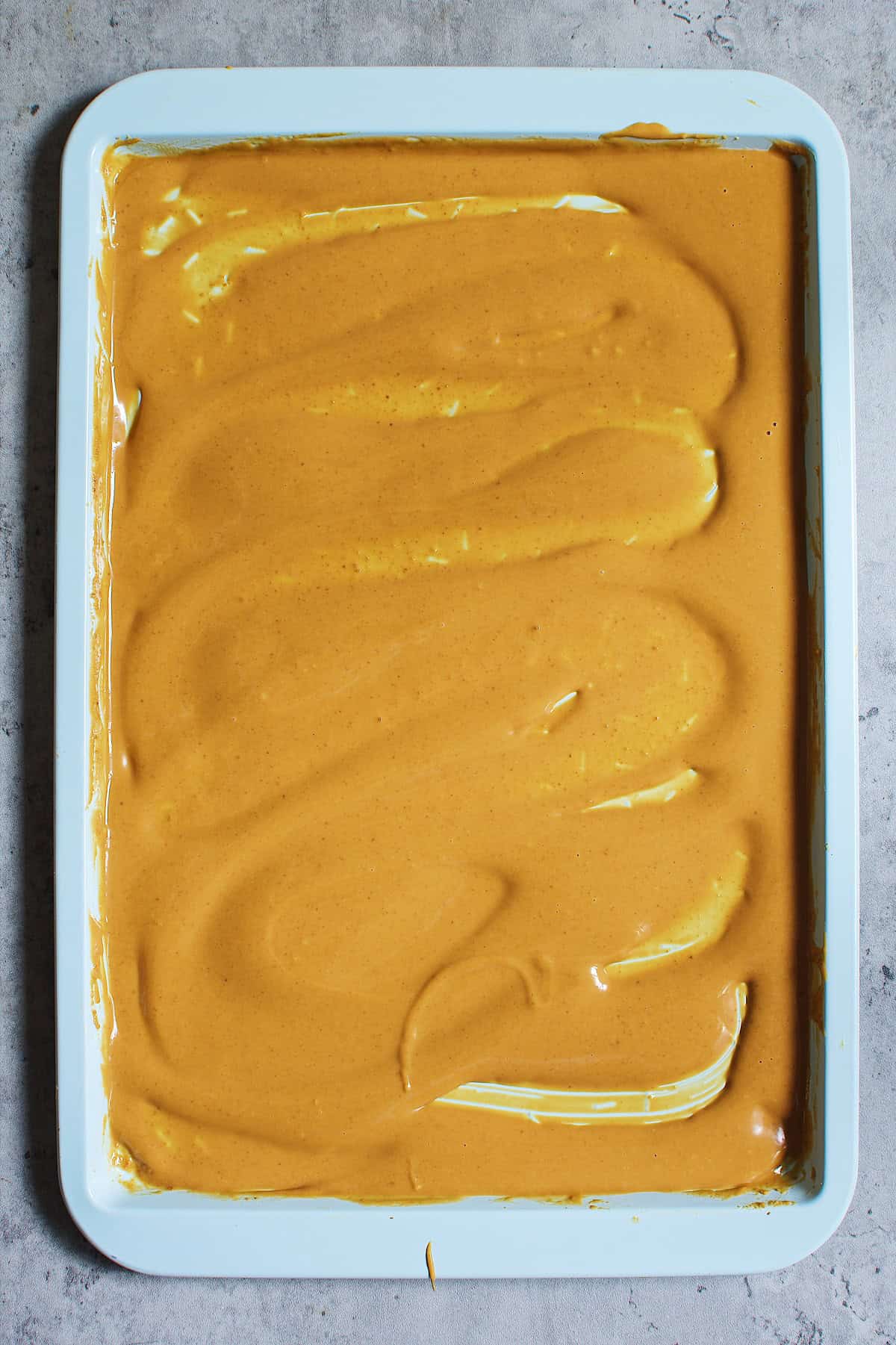
Jump to:
Where Does Blonde Chocolate Come From?
If you don't want to make blonde chocolate at home, several companies make a much more delicious & ethical version than any Hershey's, Dove, or Nestle option you'd find at the convenience store. One of these includes Fruition Chocolate, whose products you can also find at Bar & Cocoa.
Fun fact— you can also caramelize milk chocolate! I actually first tried caramelized white chocolate and caramelized milk chocolate in the same afternoon, back when I was living in Guatemala in 2015. In the years since, the confection has failed to gain as much traction as the famed ruby chocolate, launched by Callebaut in 2017.
This is despite the fact that blonde chocolate is caramelised white chocolate, and therefore legally considered chocolate (unlike ruby). Valrhona Chocolate, the inventors of Blond® chocolate, actually made a gallant effort to promote it as the 4th type of chocolate many years before ruby.
There were public launch parties around the world for caramelized white chocolates! Yet blonde chocolates remain the domain of pastry chefs & fancy tasting menus, while ruby has seemed to take over the 4th spot— in the public's eye, at least.

What Is Blonde Chocolate?
Quite simply, blonde chocolate is a type of white chocolate which has been caramelized. This is achieved either by cooking the finished chocolate or using "caramelized" milk powder in the initial recipe (more accurately described as milk crumb).
But just like ruby, blond chocolate manipulates existing chocolate ingredients to develop a new flavor profile. In this case, they change the flavor of the milk, arguing in the court of public opinion that this change warrants the declaration of a new type of chocolate.
This isn't completely unprecedented, either; white chocolate didn't even have a standard legal definition in the US until 2002. It was shortly after that that the first type of blonde chocolate was created by the French company Valrhona Chocolate, in 2004.

Truth be told, its discovery was an accident. In the years since, however, that accident has translated into thousands of kilos of blonde chocolate being sold to pastry kitchens around the world. Much of this is a matter of historical record.
But in a way, the full story gives us some clues as to what may happen with ruby chocolate as it evolves and the hype continues to die down. That is, if Callebaut chooses to continue releasing variations of ruby, as Valrhona has with blond chocolate.
Two years after launching ruby, Callebaut chose to release a different invention, WholeFruit Chocolate, while Valrhona came out with another blonde chocolate recipe following their initial launch.
So it's hard to say whether a comeback is eminent in a world where you can make a toasted white chocolate just as good (& lower in sugar!) in your oven at home. That is, if you have the patience and know-how to do so.
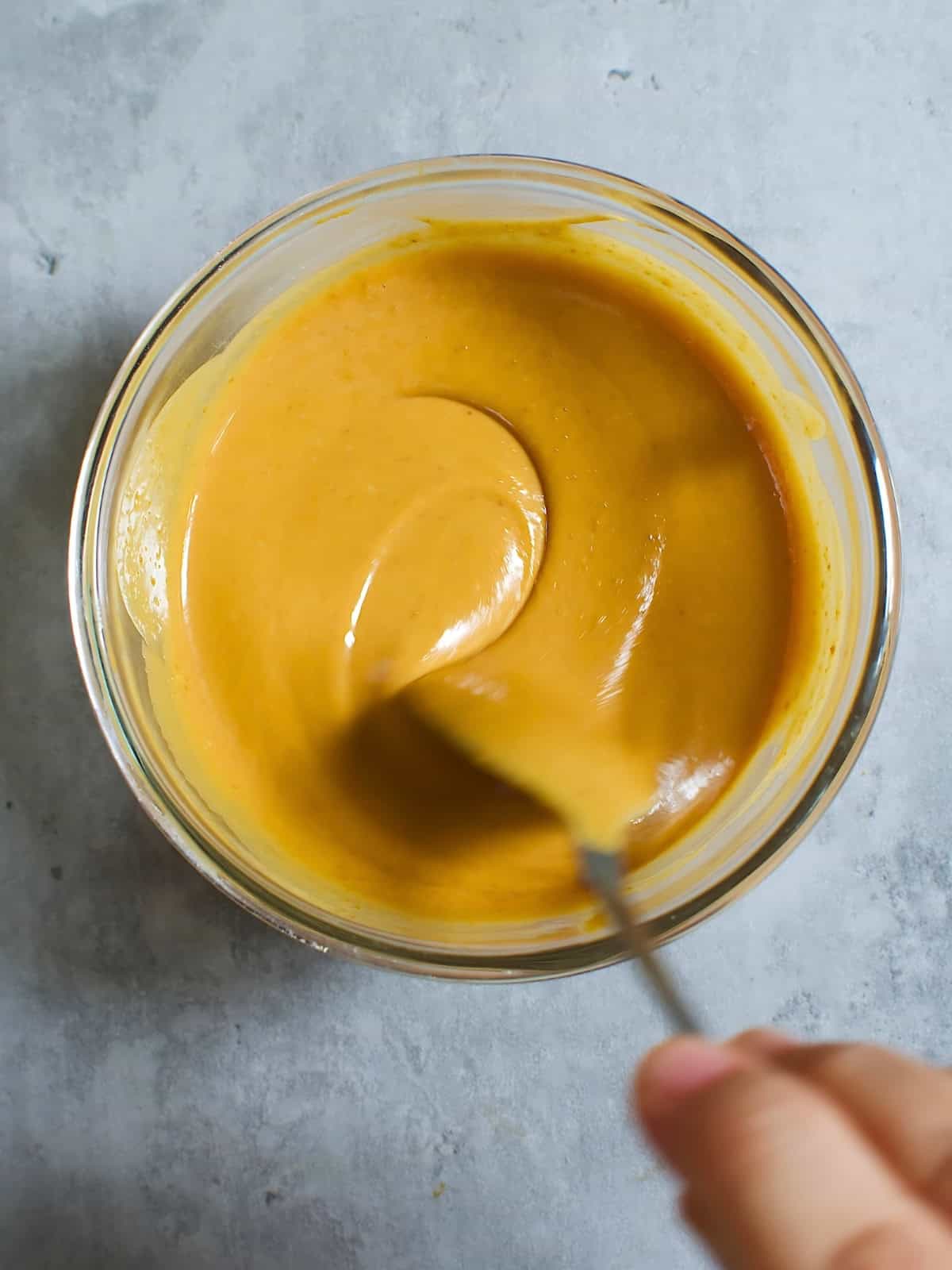
How Was Blonde Chocolate Created? (Timeline)
Legend has it that blonde chocolate was created by accident. According to many articles based off of long-lost press releases, L'Ecole Valrhona pastry chef Frédéric Bau was doing a demonstration, melting white chocolate in a bain-marie, and accidentally left the heat on overnight.
Upon returning to the kitchen, he was greeted by a brown bowl of white chocolate, miraculously both edible and delicious. It was the mid-2000's, and at that point it would be nearly a decade before Valrhona began manufacturing their mass-market version of the stuff on a large scale.
During the many years in between, the recipe became a staple lesson in L'Ecole Valrhona classes, and it made its way into several pastry kitchens (including some I've worked in). David Lebovitz even put up a caramelized white chocolate recipe on his site back in 2009, which he unsurprisingly learned from a class at L'Ecole Valrhona!
Fast forward to 2012, and Valrhona launches what would become one of their top-selling products: the Dulcey® 32%. As of publication, Dulcey is one of just two types of Blond® chocolate developed by the company (which is a certified B Corporation), with their second iteration coming in 2017: Orelys® 35%.
By the next year, the mass market had seen the launches of a slew of low quality imitators. Some of those don't even use any cacao derivatives (*cough* Hershey's *cough*), meaning that they legally can't be called chocolate.
There was a blonde chocolate Starbucks drink, several references to golden chocolate, and an overwhelming number of obscure ways to reference chocolate, without illegally calling their products chocolate. See: Hershey's Gold.
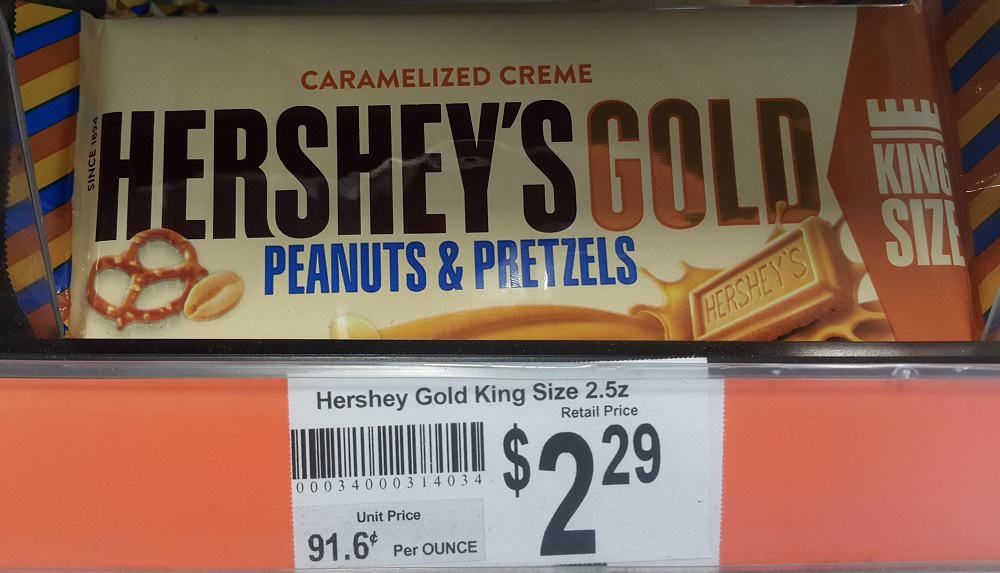
Where To Buy Blonde Chocolate
After all this reading, surely I've piqued your interest as to how blonde chocolate tastes. I could tell you that blonde chocolate tastes like caramel, fine shortbread, and cooked sugar, but there's just no replacement for tasting something for yourself.
Luckily, even though it's left the mouths of mainstream media, blonde chocolate is alive and well on the (virtual) shelves of chocolate shops around the world. Many craft chocolate makers even have their own iterations, like at that first chocolate shop I visited in Guatemala.
While I haven't actually surveyed the chocolate aisles of a regular grocery store in quite awhile, I've been told that you can buy blonde chocolate online as well as in your nearest convenience store or market. There is a caveat for that option, however, which comes down to quality.

When you're scaling up processes like this and looking to cut costs, that results in an inferior experience for consumers, often without their knowledge. To make the purest blonde chocolate possible, all you need are three ingredients: cocoa butter, milk, and sugar.
Yet to cut costs, most manufacturers up the sugar percentage, add in artificial flavors, and use a few stabilizers while they're at it. Just look at the Dove Salted Caramel Blonde Chocolate Bar as an example; Hershey's, Whittaker's, and Nestlé also have versions of blonde chocolate, among others.
Blonde Chocolate Dove Ingredients: white chocolate (sugar, cocoa butter, skim milk, milkfat, soy lecithin, pgpr, natural and artificial flavors, salt, tocopherols to maintain freshness), milk chocolate (sugar, cocoa butter, skim milk, chocolate, lactose, milkfat, soy lecithin, artificial flavor), sugar, sea salt, natural flavors.
Ladies and gentlemen, that is the vending machine cookie of blonde chocolates, when you should really be trying the metaphorical gooey-chocolate-chip-cookie-from-that-fancy-bakery-on-the-corner version. The Hershey's version is even worse, as it doesn't contain a single cacao product at all; it's basically vegetable oil with white sugar. Ew.

Below are some links for where to buy real caramelized white chocolate online, though as always, I encourage you to look for a local craft chocolate shop that may produce it near you, such as Fruition Chocolate in New York or Dormouse Chocolate in Dorchester, UK.













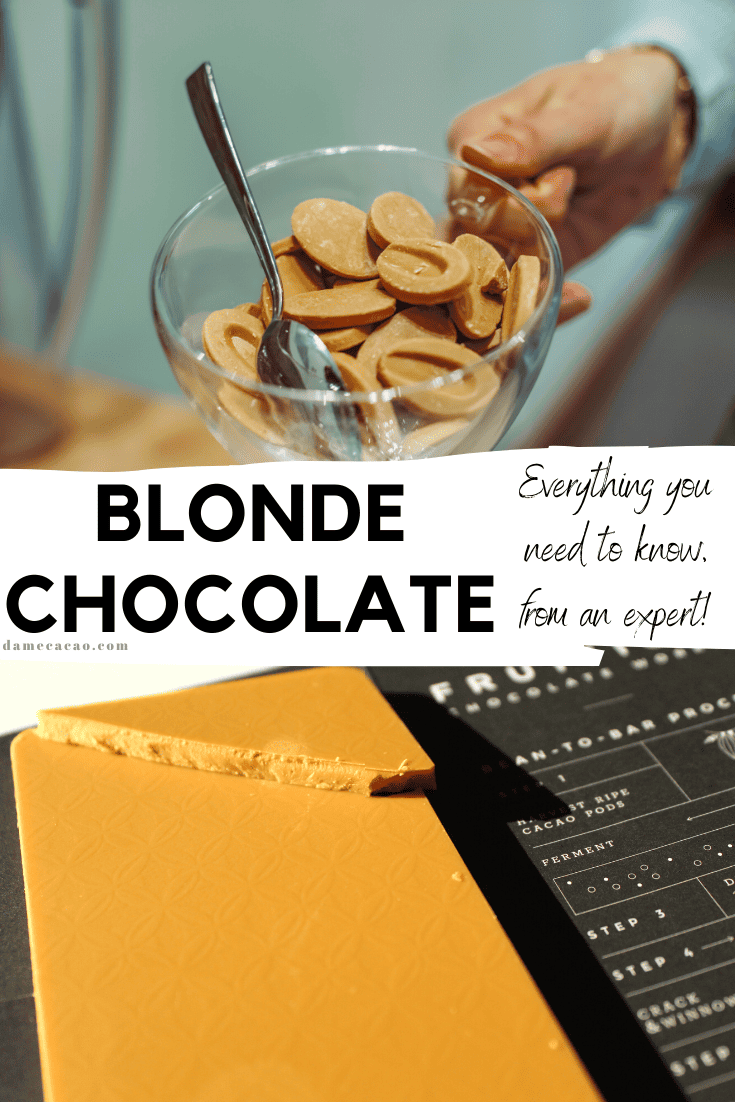
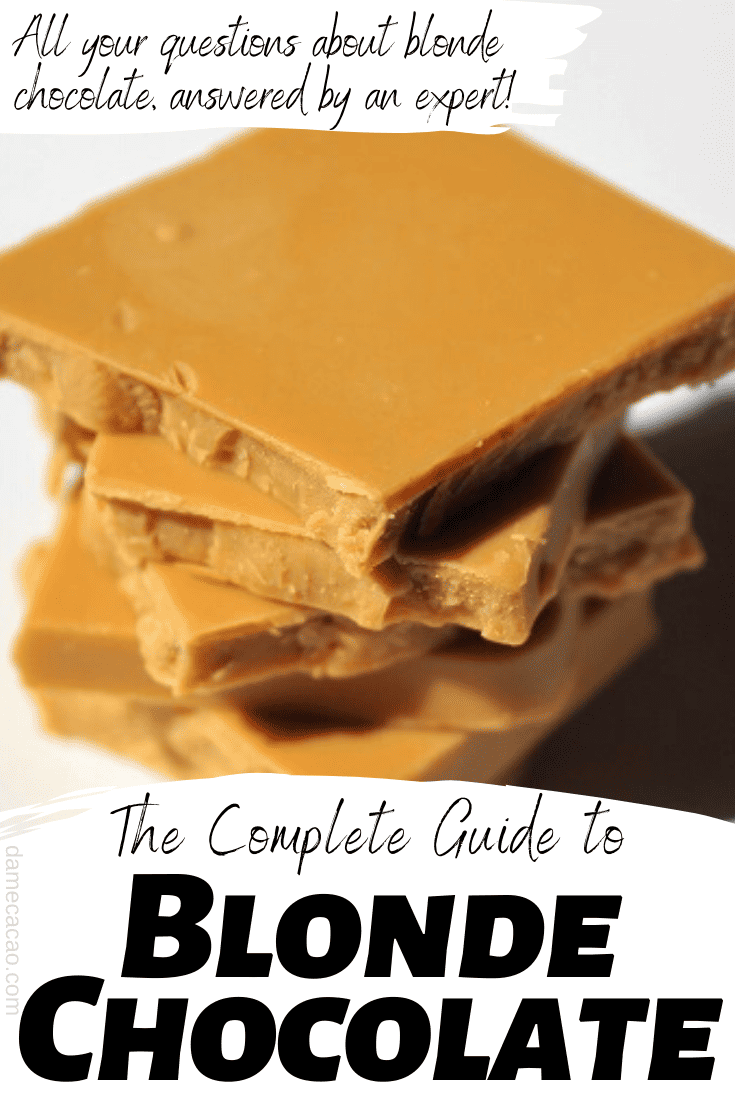
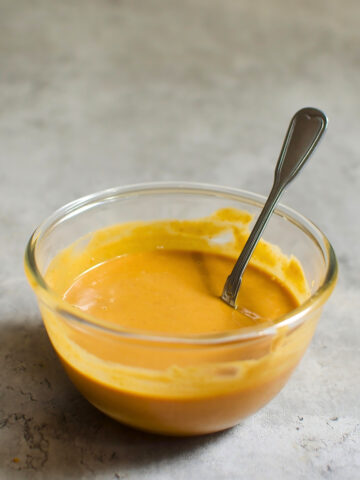
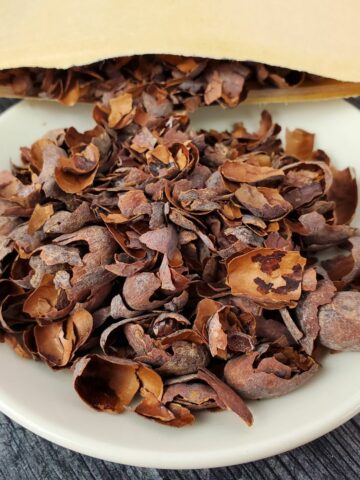


Linda
So excited to finally find an easy recipe to follow! I've kept this bookmarked forever!